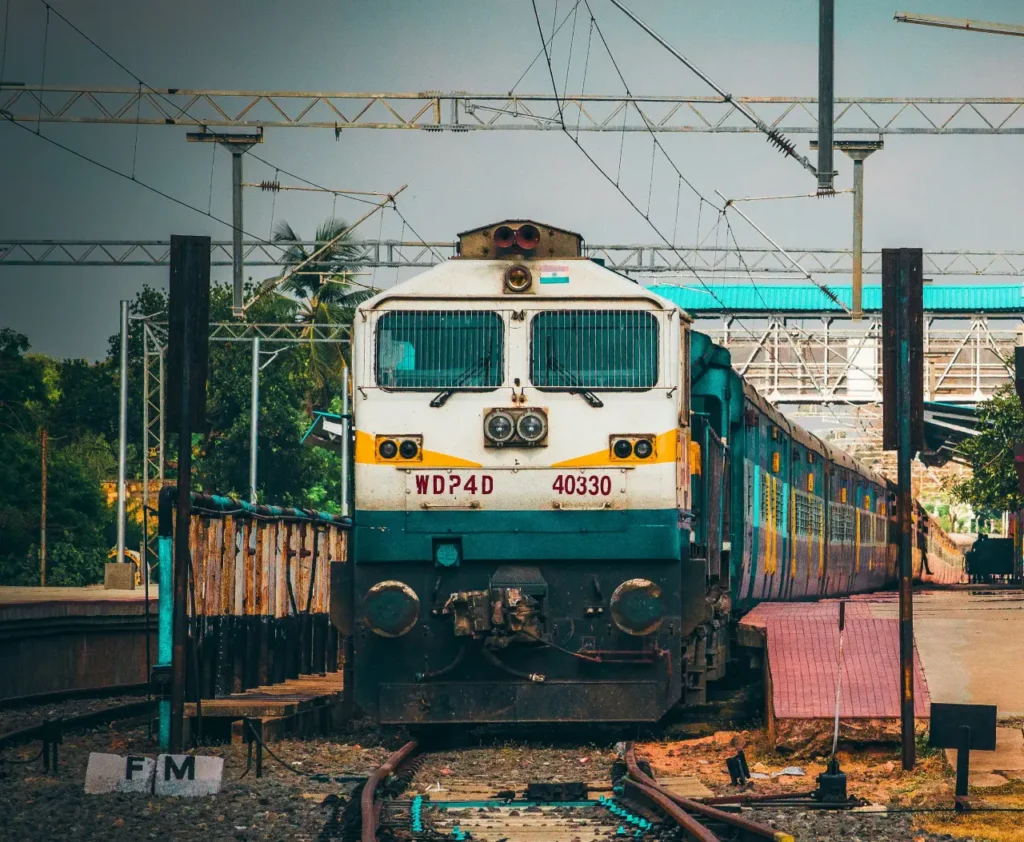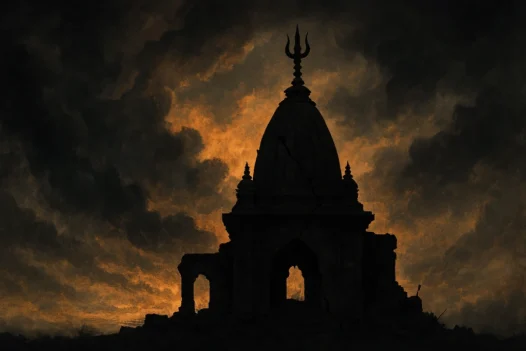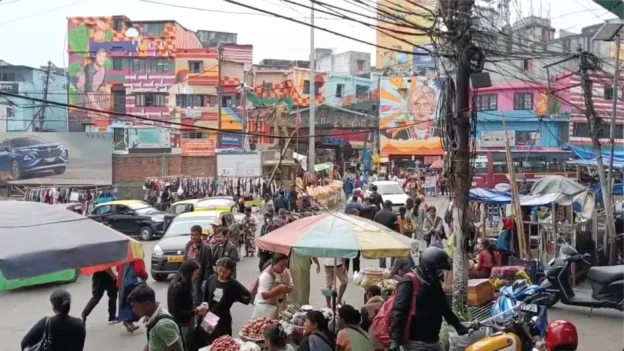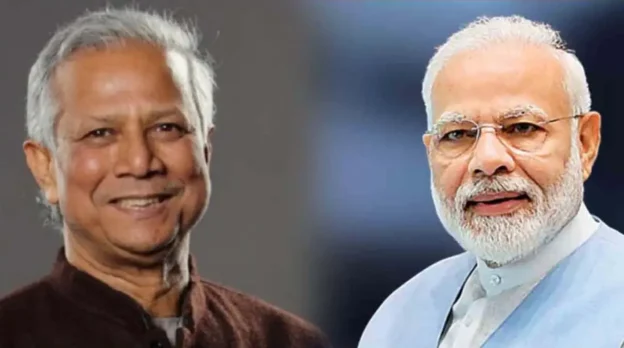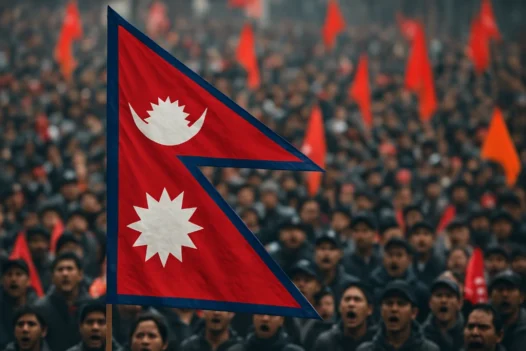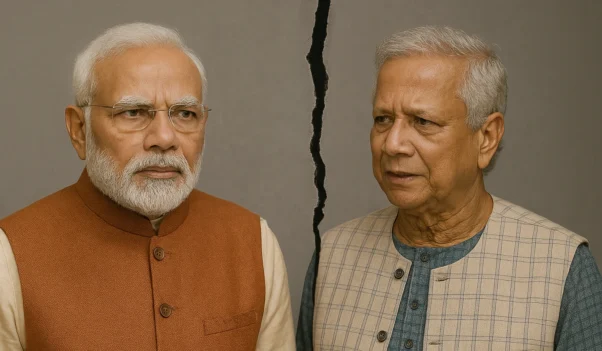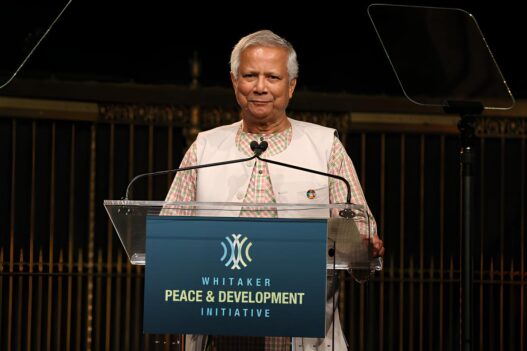The impasse over railway connectivity in Meghalaya has taken a decisive turn, with Union Railway Minister Ashwini Vaishnaw issuing a firm directive—placing the responsibility squarely on the state government to persuade stakeholders within a set timeframe. While the Centre remains committed to railway expansion, Meghalaya’s leadership is caught between development goals and strong opposition from pressure groups. Vaishnaw’s warning has reignited the long-standing debate, underscoring the state’s inability to forge a consensus on an issue that has remained unresolved for years.
Shillong is poised to remain the only Indian state capital without a railway link, as the Meghalaya government has neither successfully engaged with civil society groups, pressure organisations, and political parties nor taken definitive steps to facilitate railway projects. The Ministry of Railways has left the matter in the state government’s hands, with Vaishnaw’s remarks signalling the Centre’s growing impatience.
At a press conference on Monday, Vaishnaw refrained from officially shelving the Tetelia-Byrnihat and Byrnihat-Shillong railway projects, for which nearly ₹200 crore has already been allocated. However, his statements reflected mounting frustration over stalled progress, making it clear that the deadlock stems from the state’s failure to secure broad-based support. “As per our Constitution, both the Centre and the states share responsibilities in executing projects of national importance with significant economic implications,” Vaishnaw asserted, shifting the burden of persuasion to Chief Minister Conrad K Sangma’s administration.
Opposition to the railway initiative in Meghalaya has persisted for years, with pressure groups such as the Khasi Students’ Union (KSU) standing firm in their demand for effective anti-influx safeguards before any railway development proceeds. Concerns over unregulated migration remain the core issue. The prospect of connecting Meghalaya, especially Shillong, to the national railway network has been met with deep scepticism from local organisations that fear unchecked influx will disrupt the state’s demographic composition.
Vaishnaw made it clear that resolving the deadlock is now the state government’s responsibility. “I have communicated the urgency of this matter to Chief Minister Conrad K Sangma in a recent meeting. The issue must be addressed within a time limit,” he said, leaving no ambiguity—either Meghalaya takes action, or the allocated funds could be diverted elsewhere.
Sangma, for his part, acknowledged the precarious situation, admitting that Meghalaya risks losing the ₹200 crore sanctioned for these projects if the impasse continues. He warned that the government might shift its focus to other regional railway developments. “I emphasised the need to involve all stakeholders before making a major decision,” he said, underlining that community consensus remains a priority.
The two projects facing resistance are the 22-km Tetelia-Byrnihat railway line and the 108-km Byrnihat-Shillong line. The ₹496 crore Tetelia-Byrnihat railway project has been stalled since 2017 due to fears of unchecked migration. Sangma noted that while he sought additional time, the Union Minister did not impose a strict deadline but indicated that he would follow up with a formal letter and, if necessary, visit Meghalaya for direct discussions with stakeholders.
A fractured vision: Development vs. migration concerns
Despite ongoing opposition, there is growing acknowledgement that railway connectivity is crucial for economic progress. With logistics and trade playing an increasingly significant role in regional development, demand for railway infrastructure is rising. The Bharatiya Janata Party (BJP)-led NDA government has persistently advocated for railway expansion, particularly for freight transport, with BJP leaders in Meghalaya echoing these demands.
The ruling Meghalaya Democratic Alliance (MDA), led by the National People’s Party (NPP), has approached the issue cautiously. Chief Minister Conrad Sangma has consistently emphasised the need for consensus-building, insisting that all stakeholders must be brought on board before any progress is made. In March 2023, he announced plans to engage various groups on the introduction of goods trains, citing their potential to boost economic activity, particularly in the agricultural sector.
However, despite these deliberations, little tangible progress has been made. In October 2024, Deputy Chief Minister Sniawbhalang Dhar reaffirmed that railway projects had not been abandoned but stressed that consultations remained the government’s top priority. “A final decision is yet to be made because our primary goal is to secure stakeholder support. Only once consensus is reached will the government take a definitive stand,” he said.
Projects stuck in limbo
At present, Meghalaya has only one functional railway station—Mendipathar, located in the North Garo Hills district, near the Assam border. Notably, the Ministry has allocated ₹39.5 crore for its redevelopment under the Railway Station Redevelopment Programme.
While these projects hold the promise of better connectivity, they remain mired in local opposition. According to reports in the media the Byrnihat-Shillong railway project, sanctioned in 2011, remains unfinished even after 13 years. Quoting sources from the Northeast Frontier Railway (NFR) media reports claim that the Tetelia-Byrnihat project has been stalled since 2017 due to opposition from local groups and since then there has been no serious efforts by the government to restart the project or hold negotiations with opposing groups.
Media reports also claim that repeated discussions between the state and central governments have yielded little progress. A senior official from the Northeast Frontier Railways (NFR) has been quoted as saying, “We also need land acquisition from the Meghalaya government.” This bureaucratic hurdle, combined with public resistance, has further delayed the projects.
Political dynamics and divergent views
While the MDA government has been cautious in its approach, its stance has raised questions about its commitment to the railway projects. Observers note that for the past three years, no major steps have been taken to revive the stalled initiatives. The estimated cost of the 20.5 km Tetelia-Byrnihat railway line stands at approximately ₹496 crore, with just 2.5 km of the track falling within Meghalaya.
The United Democratic Party (UDP), a key ally in the MDA government, has expressed openness to considering the introduction of goods trains but remains opposed to passenger trains. The party argues that an effective mechanism to regulate and monitor passenger movement must be established before Meghalaya allows railways to expand further.
On the other hand, BJP leader Mariahom Kharkrang has reignited the issue when on February 4 he advocated for railway expansion, at least for freight transport. He told local media that railways provide better monitoring of passengers than roadways since travellers are required to disembark at designated stations where identity verification is easier. He further stressed that goods trains would significantly lower transportation costs, benefiting farmers and traders by making their produce more competitive and affordable.
The push from the Centre
The push for railway connectivity is not just a local demand; it is a national priority. Prime Minister Narendra Modi has been keen on ensuring that all state capitals are connected by rail, seeing it as a crucial step towards economic integration and national development. The Union Railway Minister has echoed this sentiment, urging state governments to prioritise connectivity projects.
However, Meghalaya’s unique socio-political landscape necessitates a more nuanced approach. Chief Minister Conrad Sangma has consistently highlighted this, stating that while railway connectivity is vital, the concerns of traditional institutions and community organisations cannot be ignored. According to media reports that The Khasi Hills Autonomous District Council (KHADC) has yet to issue the necessary No-Objection Certificate (NOC), which remains a significant roadblock.
The road ahead: Finding common ground
The fate of railway connectivity in Meghalaya hinges on the ability to balance development aspirations with local concerns. The ongoing impasse underscores the need for a structured dialogue between the state government, traditional institutions, and pressure groups.
While economic logic supports railway expansion, social and political realities demand careful negotiations. The Meghalaya government faces the challenge of bridging these diverging perspectives and finding a path forward that ensures both development and the protection of indigenous identity.
As the discussions continue, the tracks to Meghalaya’s railway future remain unfinished, waiting for consensus to pave the way forward.

